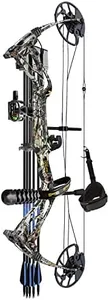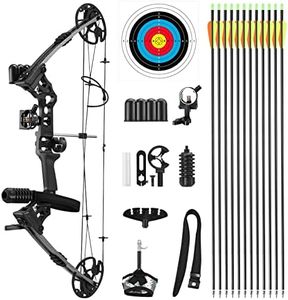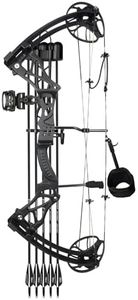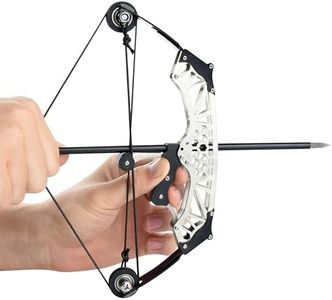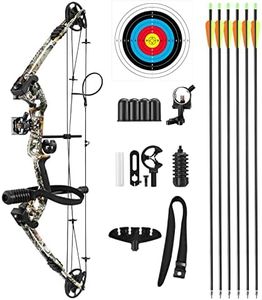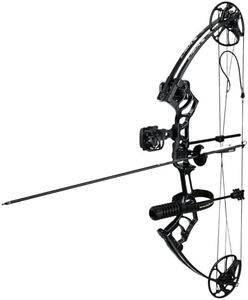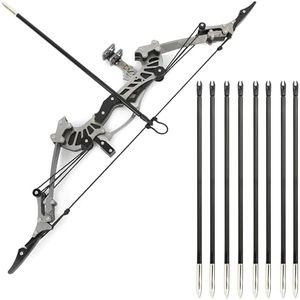We Use CookiesWe use cookies to enhance the security, performance,
functionality and for analytical and promotional activities. By continuing to browse this site you
are agreeing to our privacy policy
10 Best Compound Bow Sets
From leading brands and best sellers available on the web.By clicking on a link to a third party's website, log data is shared with that third party.
Buying Guide for the Best Compound Bow Sets
Choosing the right compound bow set can make a huge difference in your archery experience, whether you're just starting out or looking to improve your skills. The perfect set should fit your size, strength, and intended use, such as target shooting or hunting. Take time to understand what the main features mean and think about how and where you plan to use your bow. This will help you find a bow that feels comfortable, is easy to handle, and lets you shoot safely and accurately.Draw WeightDraw weight is the amount of force needed to pull back the string to its full position. It’s crucial because a higher draw weight means the arrow will travel faster and hit harder, but it also requires more strength to pull. Lighter draw weights (typically under 40 pounds) are easier for beginners, kids, or those focusing on target shooting. Heavier draw weights (40 pounds and above) are often used by hunters who need more power. To choose correctly, think about your own strength, how long you can hold a bow drawn, and what you’ll mostly be shooting at.
Draw LengthDraw length is the distance from the grip to the string when the bow is fully drawn. This measurement is important because it affects your accuracy and comfort. If the draw length is too short or too long for your arm span, shooting can feel awkward and your accuracy will suffer. Bows often come with adjustable draw lengths. Make sure to measure your own wingspan and adjust or choose a bow that matches for best results.
Axle-to-Axle LengthAxle-to-axle length is the measurement from one end of the bow to the other, where the wheels (cams) attach. Shorter bows (under 32 inches) are easier to maneuver in small spaces, which is great for hunting in dense areas. Longer bows (33 inches and up) tend to be steadier and more forgiving, which can be better for target shooting. Consider where you’ll use your bow most often to decide which length fits your situation.
Let-OffLet-off is a feature unique to compound bows, and it means how much the bow’s system reduces the holding weight at full draw. For example, a bow with 80% let-off will only require you to hold 20% of the maximum draw weight once it’s fully drawn. A higher let-off allows you to aim longer with less strain, which can be useful for beginners or hunters waiting for the right shot. If you want to shoot comfortably for longer, look for higher let-off percentages.
Weight of the BowThe actual weight of the bow matters for carrying and handling. Lighter bows are easier to carry over long distances and are less tiring to use, especially for young shooters or those prone to fatigue. Heavier bows can be more stable while aiming, which some target shooters prefer. Choose a weight that feels comfortable in your hand and matches your planned use.
Included AccessoriesMost compound bow sets come with accessories like sights, arrow rests, quivers, and sometimes arrows. These can make getting started much easier, but their quality and usefulness can vary. Check what comes in the set, make sure it matches your needs, and confirm that you can upgrade parts in the future. If you’re a beginner, a kit with more included accessories can mean you’ll be ready to shoot right away.
